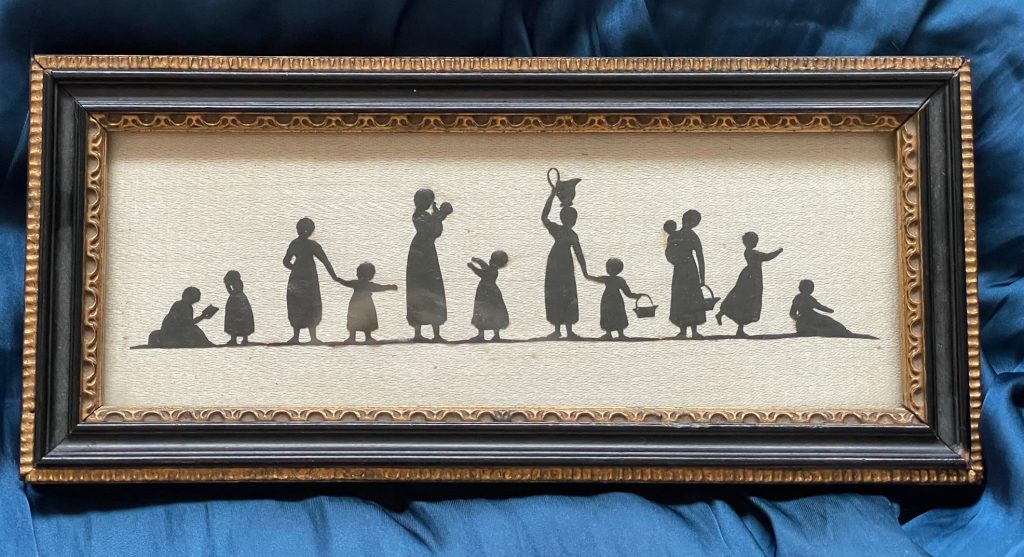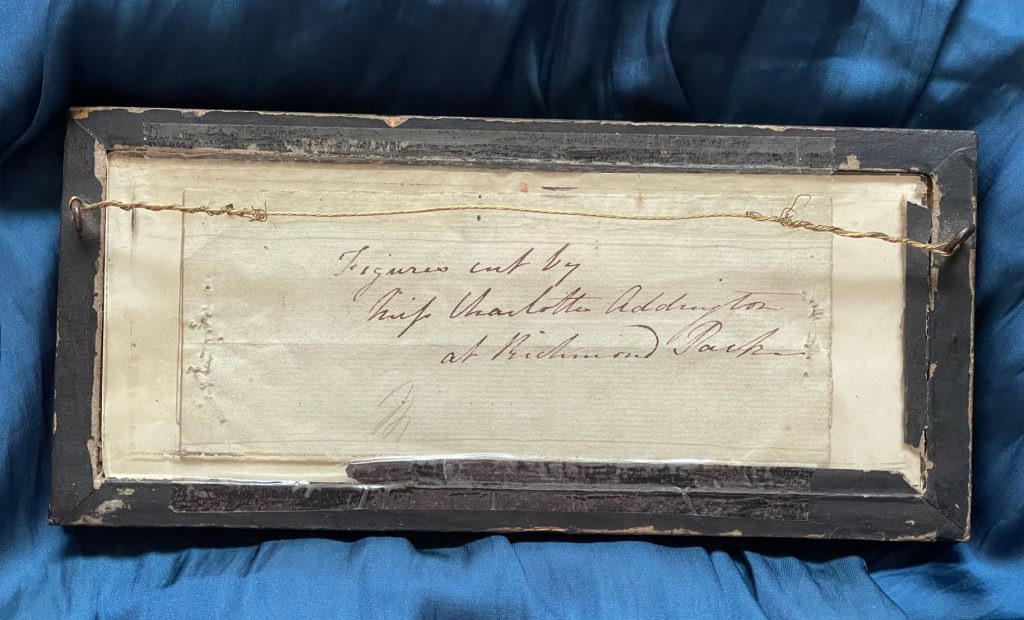Miss Charlotte Addington (1801-1870)
 This signed work is the only known silhouette by Charlotte Addington to have been recorded. The small figures are cut as a single piece from glossy black paper and have been laid onto cream silk. It is an accomplished piece as the figures are well-balanced with each one showing movement. The stiffness of straight lines often associated with amateur profiles has been successfully avoided.
This signed work is the only known silhouette by Charlotte Addington to have been recorded. The small figures are cut as a single piece from glossy black paper and have been laid onto cream silk. It is an accomplished piece as the figures are well-balanced with each one showing movement. The stiffness of straight lines often associated with amateur profiles has been successfully avoided.
Charlotte may have been inspired to try her hand at cutting silhouettes by the publication of Groups of Figures from Cuttings in Black Paper: Intended as Lessons for Instruction in Paper Cutting. Based on cuttings by Miss Barbara Anne Townshend, this book was first published in 1808 when Charlotte was seven years old. A further edition retitled Introduction to the Art of Cutting Groups of Figures, Flowers, Birds, Etc. in Black Paper was published in 1815 when Charlotte was fourteen years old.
The text advised would-be cutters not to draw out their design beforehand but to cut it freehand – ‘by drawing the designs first it takes greatly from the merit of cutting …’. Another influence may have been the genre cuttings made by Princess Elizabeth. Although these were cut in the 1790s, before Charlotte was born, she may have had access to them at Windsor Castle.
Born in 1801, Charlotte was the sixth child of Henry Addington, 1st Viscount Sidmouth and his wife Ursula Mary Hammond. Her grandfather was physician to William Pitt the Elder and so her father became a lifelong friend of William Pitt the Younger. It may have been their influence that drew Addington into politics. He served as British Prime Minister between 1801 and 1804 and then as Home Secretary.
Whilst Prime Minister, King George III gifted Addington the use of White Lodge in Richmond Park and this is where Charlotte and her siblings grew up and where Charlotte cut this silhouette. The silhouette is undated but is estimated to have been cut around 1815-1820.
Charlotte was 37 years old when she married the Rev. Horace Gore Currie in May 1838. The couple continued to live at White Lodge until Henry Addington’s death in 1844 whereupon they moved to Sevenoaks where Charlotte died in 1870. They had no children. White Lodge subsequently became home to various members of the Royal Family until in 1855 Sadler’s Wells was granted permanent use of the building to house the Royal Ballet School.
